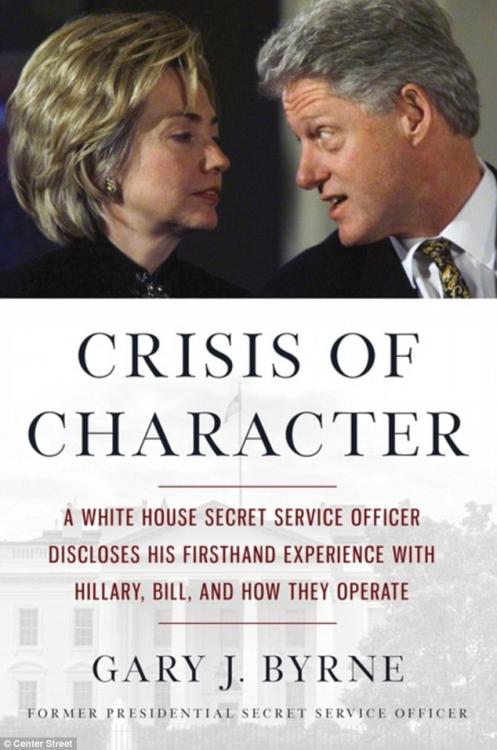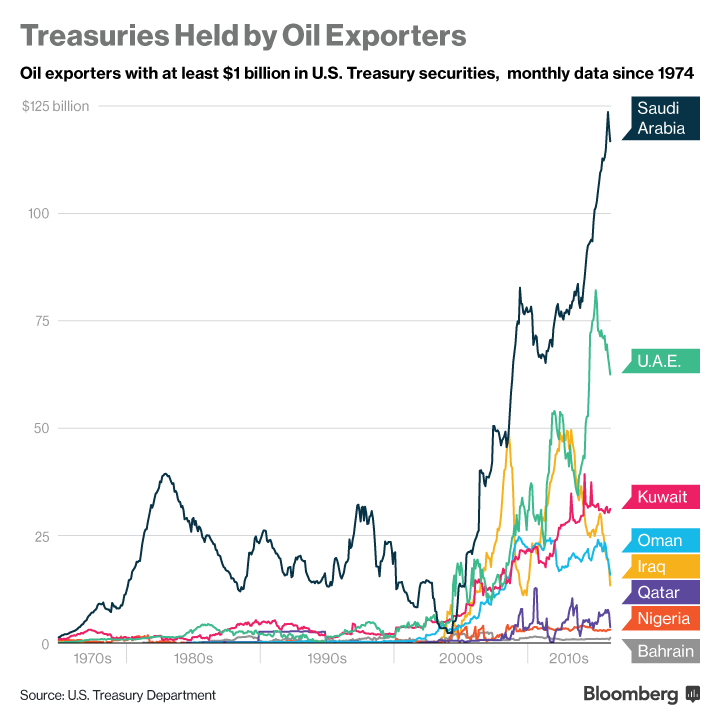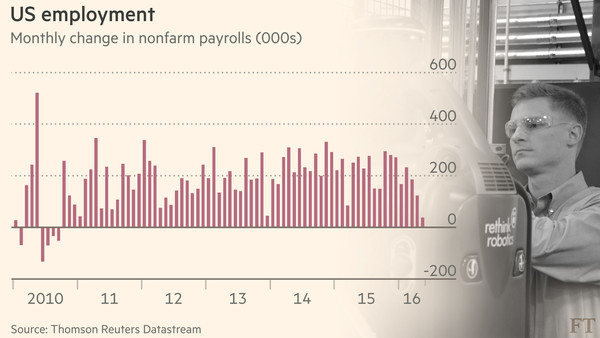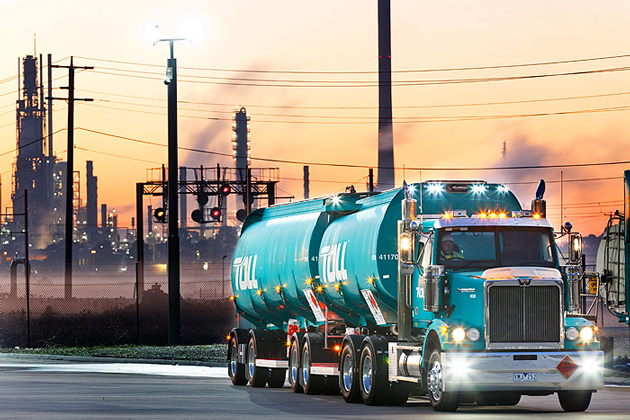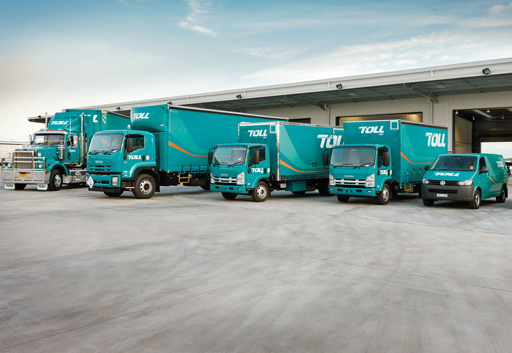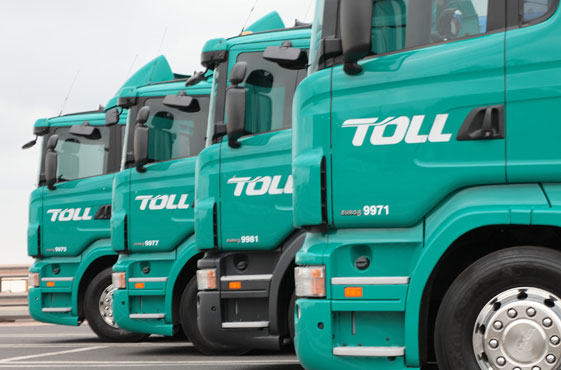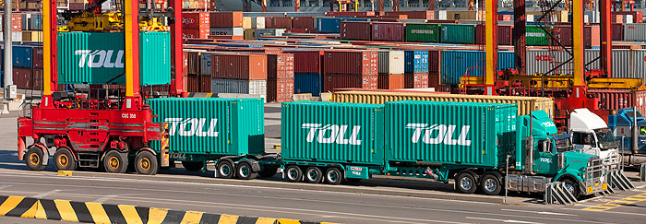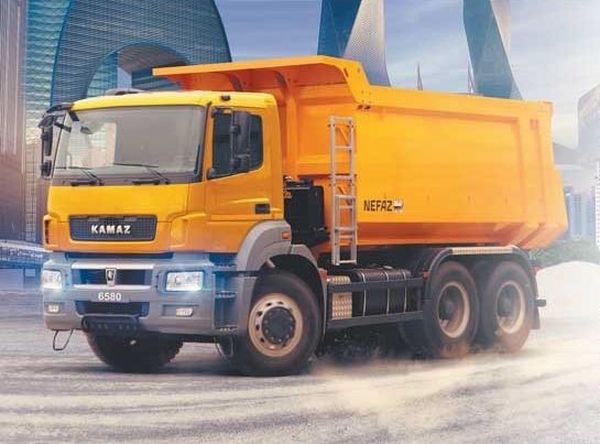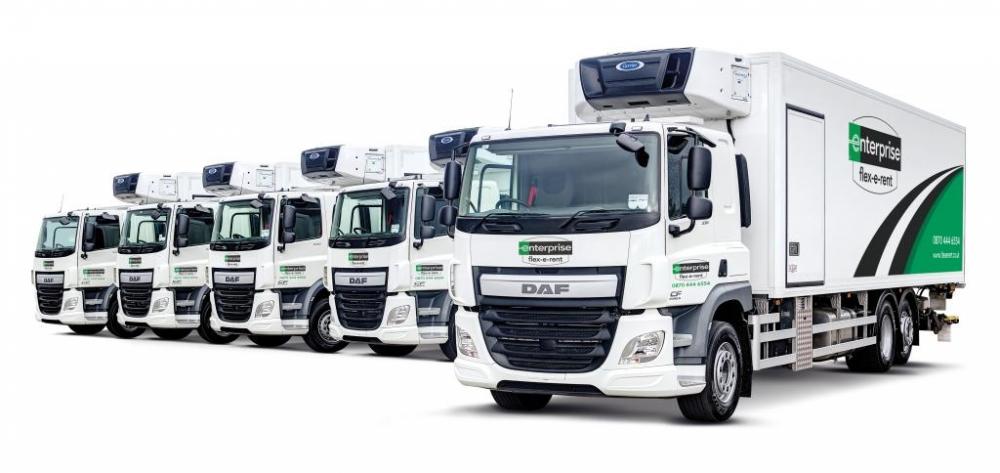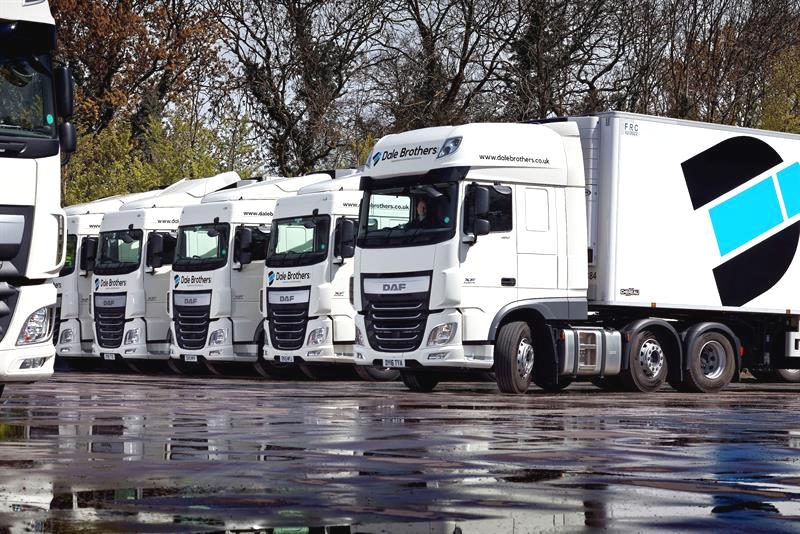
kscarbel2
Moderator-
Posts
17,891 -
Joined
-
Days Won
86
Content Type
Profiles
Forums
Gallery
Events
Blogs
BMT Wiki
Collections
Store
Everything posted by kscarbel2
-
Truck's are a rare item in Volvo Group's lifeless North American market "Born Ready" video. When trucks are visible...........they are always in the background. The video appears to have been originally created for a work clothes manufacturer, and resuscitated in a bid at Volvo's Mack brand business. The video is a black eye for Volvo's U.S. brand and marketing firm, VSA partners. . . Given how pathetic the US market video is, it's puzzling how Mack Australia was able to do what amounts to being a rather good "Born Ready" video. Same meaningless, bland and forgettable slogan, but the video actually focuses on Mack, heritage and........trucks. The one mistake is Volvo didn't hire the immensely respected Steve Brooks to be the narrator. . If one didn't know better, you'd swear that you were looking at two entirely different truckmakers (a bad one, and a very good one). That takeaway is damning to Volvo, and verifies once more that.........what Volvo Group has done, reduce an American icon down to a mere shell of its former self, a Mack nameplate on a North American Volvo platform, should be a crime.
-
Titan or CHU Pinnacle for a lowboy tractor?
kscarbel2 replied to Tuffguy707's topic in Modern Mack Truck General Discussion
All that said, you realize that the Volvo I-Shift (and Mack-branded variants) is available in many versions with differing ratings. The units sold in Oz are not identical to the units sold in the states. Volvo's US market I-Shift (mdrive) brochures don't list models, max torque ratings or gear ratios........no specs whatsoever. Apparently you're supposed to blindly trust them, and not question. -
"People should and do trust me" - Hillary Clinton
kscarbel2 replied to kscarbel2's topic in Odds and Ends
-
I'm not sure that I'm following you. Click on this link below, and then click on "Visit International Site", or click on the word "International" at the bottom left of the page. https://www.fordtrucks.com.tr/Language
-
The Prima, introduced in 2008, is a tale of two trucks. The India-produced Tata-branded Prima is rugged where it counts (chassis), but low cost in all other areas to meet the ultra price sensitive Indian market requirement. Meanwhile, the Korea-produced Daewoo-branded Prima is medium to high-end with Daewoo 11-liter V-8 power to 450hp, Cummins ISM to 440hp and [Iveco] Cursor 13 power up to 560 hp, paired with ZF 16-speed manual transmissions or ZF AS Tronic 12-speed AMTs, and air suspension. (FYI - General Motors purchased the car-making Daewoo Motors in 2002, and Tata acquired Daewoo Commercial Vehicles in 2004) Tata Daewoo Global Website - http://www.tata-daewoo.com/ Tata (India) Global Website - http://www.tatamotors.com/product/prima/ Tractor brochure http://www.trucksplanet.com/photo/daewoo/prima/prima_k1055.pdf Tipper brochure http://www.trucksplanet.com/photo/daewoo/prima/prima_k1054.pdf Mixer brochure http://www.trucksplanet.com/photo/daewoo/prima/prima_k987.pdf Rigid brochure http://www.trucksplanet.com/photo/daewoo/prima/prima_k991.pdf .
-
Bloomberg / June 5, 2016 Failure was not an option. It was July 1974. A steady predawn drizzle had given way to overcast skies when William Simon, newly appointed U.S. Treasury secretary, and his deputy, Gerry Parsky, stepped onto an 8 a.m. flight from Andrews Air Force Base. On board, the mood was tense. That year, the oil crisis had hit home. An embargo by OPEC’s Arab nations—payback for U.S. military aid to the Israelis during the Yom Kippur War—quadrupled oil prices. Inflation soared, the stock market crashed, and the U.S. economy was in a tailspin. Officially, Simon’s two-week trip was billed as a tour of economic diplomacy across Europe and the Middle East, full of the customary meet-and-greets and evening banquets. But the real mission, kept in strict confidence within President Richard Nixon’s inner circle, would take place during a four-day layover in the coastal city of Jeddah, Saudi Arabia. The goal: neutralize crude oil as an economic weapon and find a way to persuade a hostile kingdom to finance America’s widening deficit with its newfound petrodollar wealth. And according to Parsky, Nixon made clear there was simply no coming back empty-handed. Failure would not only jeopardize America’s financial health but could also give the Soviet Union an opening to make further inroads into the Arab world. It “wasn’t a question of whether it could be done or it couldn’t be done,” said Parsky, 73, one of the few officials with Simon during the Saudi talks. At first blush, Simon, who had just done a stint as Nixon’s energy czar, seemed ill-suited for such delicate diplomacy. Before being tapped by Nixon, the chain-smoking New Jersey native ran the vaunted Treasuries desk at Salomon Brothers. To career bureaucrats, the brash Wall Street bond trader—who once compared himself to Genghis Khan—had a temper and an outsize ego that was painfully out of step in Washington. Just a week before setting foot in Saudi Arabia, Simon publicly lambasted the Shah of Iran, a close regional ally at the time, calling him a “nut.” But Simon, better than anyone else, understood the appeal of U.S. government debt and how to sell the Saudis on the idea that America was the safest place to park their petrodollars. With that knowledge, the administration hatched an unprecedented do-or-die plan that would come to influence just about every aspect of U.S.-Saudi relations over the next four decades (Simon died in 2000 at the age of 72). The basic framework was strikingly simple. The U.S. would buy oil from Saudi Arabia and provide the kingdom military aid and equipment. In return, the Saudis would plow billions of their petrodollar revenue back into Treasuries and finance America’s spending. It took several discreet follow-up meetings to iron out all the details, Parsky said. But at the end of months of negotiations, there remained one small, yet crucial, catch: King Faisal bin Abdulaziz Al Saud demanded the country’s Treasury purchases stay “strictly secret,” according to a diplomatic cable obtained by Bloomberg from the National Archives database. With a handful of Treasury and Federal Reserve officials, the secret was kept for more than four decades—until now. In response to a Freedom-of-Information-Act request submitted by Bloomberg News, the Treasury broke out Saudi Arabia’s holdings for the first time this month after “concluding that it was consistent with transparency and the law to disclose the data,” according to spokeswoman Whitney Smith. The $117 billion trove makes the kingdom one of America’s largest foreign creditors. Yet in many ways, the information has raised more questions than it has answered. A former Treasury official, who specialized in central bank reserves and asked not to be identified, says the official figure vastly understates Saudi Arabia’s investments in U.S. government debt, which may be double or more. The current tally represents just 20 percent of its $587 billion of foreign reserves, well below the two-thirds that central banks typically keep in dollar assets. Some analysts speculate the kingdom may be masking its U.S. debt holdings by accumulating Treasuries through offshore financial centers, which show up in the data of other countries. Exactly how much of America’s debt Saudi Arabia actually owns is something that matters more now than ever before. While oil’s collapse has deepened concern that Saudi Arabia will need to liquidate its Treasuries to raise cash, a more troubling worry has also emerged: the specter of the kingdom using its outsize position in the world’s most important debt market as a political weapon, much as it did with oil in the 1970s. In April, Saudi Arabia warned it would start selling as much as $750 billion in Treasuries and other assets if Congress passes a bill allowing the kingdom to be held liable in U.S. courts for the Sept. 11 terrorist attacks, according to the New York Times. The threat comes amid a renewed push by presidential candidates and legislators from both the Democratic and Republican parties to declassify a 28-page section of a 2004 U.S. government report that is believed to detail possible Saudi connections to the attacks. The bill, which passed the Senate on May 17, is now in the House of Representatives. Saudi Arabia’s Finance Ministry declined to comment on the potential selling of Treasuries in response. The Saudi Arabian Monetary Agency didn’t immediately answer requests for details on the total size of its U.S. government debt holdings. “Let’s not assume they’re bluffing” about threatening to retaliate, said Marc Chandler, the global head of currency strategy at Brown Brothers Harriman. “The Saudis are under a lot of pressure. I’d say that we don’t do ourselves justice if we underestimate our liabilities” to big holders. Saudi Arabia, which has long provided free health care, gasoline subsidies, and routine pay raises to its citizens with its petroleum wealth, already faces a brutal fiscal crisis. In the past year alone, the monetary authority has burned through $111 billion of reserves to plug its biggest budget deficit in a quarter-century, pay for costly wars to defeat the Islamic State, and wage proxy campaigns against Iran. Though oil has stabilized at about $50 a barrel (from less than $30 earlier this year), it’s still far below the heady years of $100-a-barrel crude. Saudi Arabia’s situation has become so acute the kingdom is now selling a piece of its crown jewel—state oil company Saudi Aramco. What’s more, the commitment to the decades-old policy of “interdependence” between the U.S. and Saudi Arabia, which arose from Simon’s debt deal and ultimately bound together two nations that share few common values, is showing signs of fraying. America has taken tentative steps toward a rapprochement with Iran, highlighted by President Barack Obama’s landmark nuclear deal last year. The U.S. shale boom has also made America far less reliant on Saudi oil. “Buying bonds and all that was a strategy to recycle petrodollars back into the U.S.,” said David Ottaway, a Middle East fellow at the Woodrow Wilson International Center in Washington. But politically, “it’s always been an ambiguous, constrained relationship.” Yet back in 1974, forging that relationship (and the secrecy that it required) was a no-brainer, according to Parsky, who is now chairman of Aurora Capital Group, a private equity firm in Los Angeles. Many of America’s allies, including the U.K. and Japan, were also deeply dependent on Saudi oil and quietly vying to get the kingdom to reinvest money back into their own economies. “Everyone—in the U.S., France, Britain, Japan—was trying to get their fingers in the Saudis’ pockets,” said Gordon S. Brown, an economic officer with the State Department at the U.S. embassy in Riyadh from 1976 to 1978. For the Saudis, politics played a big role in their insistence that all Treasury investments remain anonymous. Tensions still flared 10 months after the Yom Kippur War, and throughout the Arab world, there was plenty of animosity toward the U.S. for its support of Israel. According to diplomatic cables, King Faisal’s biggest fear was the perception Saudi oil money would, “directly or indirectly,” end up in the hands of its biggest enemy in the form of additional U.S. assistance. Treasury officials solved the dilemma by letting the Saudis in through the back door. In the first of many special arrangements, the U.S. allowed Saudi Arabia to bypass the normal competitive bidding process for buying Treasuries by creating “add-ons.” Those sales, which were excluded from the official auction totals, hid all traces of Saudi Arabia’s presence in the U.S. government debt market. “When I arrived at the embassy, I was told by people there that this is Treasury’s business,” Brown said. “It was all handled very privately.” By 1977, Saudi Arabia had accumulated about 20 percent of all Treasuries held abroad, according to The Hidden Hand of American Hegemony: Petrodollar Recycling and International Markets by Columbia University’s David Spiro. Another exception was carved out for Saudi Arabia when the Treasury started releasing monthly country-by-country breakdowns of U.S. debt ownership. Instead of disclosing Saudi Arabia’s holdings, the Treasury grouped them with 14 other nations, such as Kuwait, the United Arab Emirates and Nigeria, under the generic heading “oil exporters”—a practice that continued for 41 years. The system came with its share of headaches. After the Treasury’s add-on facility was opened to other central banks, erratic and unpublicized foreign demand threatened to push the U.S. over its debt limit on several occasions. An internal memo, dated October 1976, detailed how the U.S. inadvertently raised far more than the $800 million it intended to borrow at auction. At the time, two unidentified central banks used add-ons to buy an additional $400 million of Treasuries each. In the end, one bank was awarded its portion a day late to keep the U.S. from exceeding the limit. Most of these maneuvers and hiccups were swept under the rug, and top Treasury officials went to great lengths to preserve the status quo and protect their Middle East allies as scrutiny of America’s biggest creditors increased. Over the years, the Treasury repeatedly turned to the International Investment and Trade in Services Survey Act of 1976—which shields individuals in countries where Treasuries are narrowly held—as its first line of defense. The strategy continued even after the Government Accountability Office, in a 1979 investigation, found “no statistical or legal basis” for the blackout. The GAO didn’t have power to force the Treasury to turn over the data, but it concluded the U.S. “made special commitments of financial confidentiality to Saudi Arabia” and possibly other OPEC nations. Simon, who had by then returned to Wall Street, acknowledged in congressional testimony that “regional reporting was the only way in which Saudi Arabia would agree” to invest using the add-on system. “It was clear the Treasury people weren’t going to cooperate at all,” said Stephen McSpadden, a former counsel to the congressional subcommittee that pressed for the GAO inquiries. “I’d been at the subcommittee for 17 years, and I’d never seen anything like that.” Today, Parsky says the secret arrangement with the Saudis should have been dismantled years ago and was surprised the Treasury kept it in place for so long. But even so, he has no regrets. Doing the deal “was a positive for America.” .
-
I think you already posted your question last week. My suggestion was, you can click on the link below to the Scania USA website, click on "Distributors And Dealers", and see if they have a service point near you to do your job. http://www.scaniausa.com/
-
The Financial Times / June 3, 2016 Hiring by US employers slowed last month to the weakest pace since 2010, clouding the economic picture and dealing a blow to the prospects for a Federal Reserve rate increase this month. Non-farm payrolls rose by a seasonally adjusted 38,000 in May, below a revised 123,000 figure for April and well below expectations for growth of about 160,000. Employers took on 59,000 fewer workers in March and April than previously reported. The unemployment rate slid to 4.7 per cent from 5 per cent but the declines were driven by people quitting the labour force, rather than buoyant hiring. In a worrying signal, the number of people working part-time because they could not find a full-time post rose by 468,000. Stocks sold off and the dollar fell on the report, which also sent 10-year bond yields sliding from 1.7938 per cent to 1.728 per cent. The DXY dollar index fell 0.8 per cent. The latest payrolls numbers were affected by a strike by 35,000 Verizon Communications workers that began in late April and stretched through May. But even excluding that effect, the jobs report was poor and contrasted sharply with the robust gains that have been seen for much of the decade. “This is a smack in the face for the US economy,” said Diane Swonk of DS Economics. “They [the Fed] need to see a much better June number to keep July on the table . . . When you are losing momentum going into the meeting, that is not when you raise rates.” The strength of the US’s labour market recovery has sat at the heart of Fed chair Janet Yellen’s case for higher interest rates, and a single month’s number will not force the central bank to completely ditch its assessment of the economy. The central bank’s anecdotal Beige Book report, released on Wednesday, indicated that “tight labour markets were widely noted” in most of the Fed’s dozen districts around the country. Friday’s data from the Bureau of Labor Statistics showed that average hourly earnings grew 2.5 per cent compared with the previous year, marking a bright spot. But the jobs data make a Fed move on rates this month highly unlikely — and the odds were already very low given market risks surrounding Britain’s referendum on its EU membership. The implied probability of a June rate rise slumped in futures markets following the numbers from 5.6 per cent to 4 per cent, according to CME Group. Traders now also see a July move as less probable, given that the downward revisions to March and April numbers suggest a broader slowing in hiring. During the past three months, job gains have averaged just 116,000 per month, compared with an average of 229,000 last year. However, the Fed will have two months’ worth of fresh jobs data when it meets in July, meaning the picture could have changed by then. The question they will need to answer is whether hiring has been gently slowing as the economy approaches full employment, or whether companies are cutting back recruitment in the face of weak demand. Worryingly, the pace of growth in the vast US services sector dropped last month to the lowest level since February 2014, adding to wider concerns about the health of the recovery. The month of May saw strong gains in healthcare employment, but a host of other major sectors experienced declines, including manufacturing, where 10,000 jobs were shed; construction, where there were reductions of 15,000; and mining, with declines of 11,000. Retail jobs growth was a marginal 11,000. “Given the drop in corporate profits and investment in recent quarters, it was surprising that job growth held up so well until now,” said Gad Levanon, chief economist for North America at the Conference Board. “We expected job growth to slow, but not that much. This weak payroll report may well deter the Fed from raising rates this summer.” The data made an immediate impression on the presidential campaign, as Donald Trump, the presumptive Republican nominee, called the report a “bombshell” and a “terrible” number. Jason Furman, the chairman of the president’s Council of Economic Advisers said the hiring data were “disappointing” but pointed out that the economy has added 14.5 million jobs since 2010. The safest European government debt plummeted to the lowest levels this year after the release. German Bund yields were driven down to 0.073 per cent, while UK gilts plunged to their lowest in three months, falling 4 basis points on Friday (0.04 percentage points) to 1.298 per cent. The data represent the last major reading on the strength of the labour market before the June meeting. Top Fed officials have in recent weeks cited strength in the labour market as a key reason that the US economy is probably strong enough to withstand a gradual increase in interest rates beginning this summer. .
-
International Harvester was a major player in Oz, thanks to its localization at Dandenong. But Diamond T, Diamond Reo, Dodge* and other US brands were well received. And Oz sure liked the American 2-stroke Detroit Diesels. And please note The Australian Truck Driver's Memorial in the video at 23:10 * "Dodge 7 Series - The Profit Makers"........http://www.bigmacktrucks.com/topic/31209-when-the-dodge-boys-sold-trucks-down-under/.
-
Tested: Mack Super-Liner 685 with 60-inch sleeper
kscarbel2 replied to kscarbel2's topic in Trucking News
Mack was king in Australia, and then Kenworth slowly eroded Mack's market share. Now both are nose and nose. In the US, Mack brand management lives in a vacuum. But what do expect from an unqualified collection of management.......not a one has a background in the truck industry. -
Tested: Mack Super-Liner 685 with 60-inch sleeper
kscarbel2 replied to kscarbel2's topic in Trucking News
Those FTE trailers are cutting edge...............http://www.fte.com.au/ And one can't find a better trailer axle than the BPWs they're fitted with............http://www.bpwtranspec.com.au/products/bpw-axles/ -
Highway 31 | A Journey Down the Old Hume Superb video ! After weeks of comparing the White and Western Star prime movers, it is time for Matt Wood and Steve Brooks to hit the Old Hume Highway to answer the age-old question; is trucking what it used to be? Video - https://www.youtube.com/watch?v=zHHcqYgx2NI
-
Ford Trucks Brazil Press Release / June 1, 2016 .
-
Australasian Transport News (ATN) / June 3, 2016 Toll says the combined business will improve service and customer experience in regional Western Australia The Toll Group has signed a binding agreement to acquire the north-west Western Australia transport division of Sadleirs Group, Sadleirs-Nexus, for an undisclosed amount. Toll Express GM Larry O’Regan says the consolidation of Toll’s Express division services into Sadleirs Road Distribution Services (RDS)-Nexus will "ensure continuation of competitive transport and freight services" for customers in regional WA. "Toll Express knows how important regional business is to Western Australia, with challenges facing the industry this acquisition will safeguard the viability of transport throughout the state," O’Regan says. "The combined team will be committed to maintaining strong customer relationships and excellent service throughout Western Australia." The changes as a result of the acquisition will be "transitioned over time", without any immediate short-term effects, Toll states. The company says the new combined business will be able to "take advantage of Toll’s technology advances such as web-based track and trace, sign on glass capability and range of freight dispatch systems that enable full visibility. "All of these innovations will create a better customer experience." The acquisition is subject to customary conditions and regulatory approvals. .
-
Owner/Driver / June 2, 2016 Mel Murphy, part of the Pilbara Heavy Haulage Girls’ team, is proof that woman can take a leading role in Australia's road transport industry Mary-Ellen ‘Mel’ Murphy, born in Western Australia’s north, says trucks were her mind as a schoolkid. She’d grown up around them, plus her mother had driven trucks. Before she began driving, however, Mel worked in hospitality and day care, relocating to Sydney for five years. Moving back to WA and basing herself in Perth, she’d indirectly heard about a female company owner who was encouraging women to drive trucks. That woman was Heather Jones, co-founder of the Pilbara Heavy Haulage Girls. "I didn’t think much of it," Mel says. However, she eventually went for her heavy rigid licence. "The very next day Heather gave me a job," Mel recalls. "I had a little eight-wheeler tipper truck. It didn’t do more than 80km/h, and used to cart asphalt all around town. "I’ve worked with Heather off and on for the last 10 years." Three months after obtaining her HR licence, Mel applied for an MC permit. Although she would not be able to obtain that licence for another nine months, she was able to hone her skills doing two-up with experienced operators, such as Heather. Mel worked for Heather’s business Success Transport for a few years before heading north to the mines, driving a water cart. Then came the big move to Wally Campbell Low Loaders. "I’d been out of work for a little bit, and I was sitting on my back step," Mel explains. "Heather rang me up and said ‘Wally Campbell is about to ring and offer you a job’. I was beside myself because I thought, ‘what is she doing?’" A nervous Mel went for the interview and began driving for Wally Campbell two weeks later, carting heavy haulage machinery. "The only thing that kept me calm was the fact that Heather would not set me up for something I couldn’t do," she says. "It was the best thing I ever did; it was a really great team." "I drove Macks, Inters, MANs, Volvos, Kenworths … I was challenged on every level." Oddly enough, Mel says her favourite truck was an old ex-Army International S-Line: "It was as loud as hell, didn’t look really flash, but it just pulled like a Trojan and did the job." Nowadays, Mel drives for Qube Energy in a 540hp Volvo FH13. Qube is a big supporter of the Pilbara Heavy Haulage Girls, of which Mel has been involved with since its inception. "I’m part of it," she says. "I’ll get in there and give a hand if I have a free day. I know how well it worked for me." Mel travelled across to Melbourne with Heather Jones for the Volvo Group Media (VGA) conference in May, where VGA president Peter Voorhoeve handed over the keys to a 700hp Volvo FH and Mack Super-Liner. Both trucks will take up residence at the Pilbara Heavy Haulage Girls’ Driver Training Institute in Karratha. Mel has maintained her enthusiasm for her truck driving career, and enjoys working for Qube where she recently clocked up three years. "You do your job, they leave you alone, you get good money, and with the Volvo I get to keep all the same gear. "I was a bit dubious about driving a Volvo," Mel explains, "because I’d listened to all the banter from the boys in the yard." "Now you wouldn’t get me out of a Volvo. It’s smarter, not harder. "You get out of the truck and you’re not flogged out; you can feel the difference." .
-
Tested: Mack Super-Liner 685 with 60-inch sleeper
kscarbel2 replied to kscarbel2's topic in Trucking News
Steve Brooks is a first class. -
Steve Brooks, Trade Trucks.com.au / June 1, 2016 Sitting behind a 685hp Mack Super-Liner hauling roadtrain double in western Queensland, Steve Brooks puts it, and its new 60-inch sleeper, to the test Late in 2011, an invitation arrived to travel to Port Augusta to drive a couple of Macks up a stretch of the Stuart Highway. One a Super-Liner pulling roadtrain doubles, the other a Titan towing triples. With the Super-Liner grossing around 80 tonnes and the Titan triple at a modest 110 tonnes or thereabouts, the performance of both trucks was nothing less than outstanding at the time. Since then, I’ve driven a number of Super-Liners but the Port Augusta exercise was the last time at the helm of a Super-Liner in roadtrain configuration. Until now! New 60-inch bunk The reason for this drive is the new bunk and there’s no question that even at first glance, Mack’s new 60-inch sleeper is quick to impress. Sure, you still have the issue of no standing room between the seats but, with this bunk, it’s only one stooped step from the driver’s pew to a place where even big blokes have the space to stand bolt upright, stretch out, get changed, lay down, hang clothes, get something cool out of the fridge, and generally unwind after hours in the chair. A word of warning though: take care when moving from the bunk to the cab. There’s a huge height difference and in the middle of the night when Nature calls, it’s easy to forget and knock the noggin; and knock it hard if you’re in a hurry. Still, it’s bigger and better appointed than any bulldog bunk ever offered in this country and it’s no great surprise to learn that it’s actually derived from a premium Mack linehaul sleeper in the US. Mack’s local team, however, was not about to take any chances with durability and build quality. After all, it’s a sprawling bunk targeting the big end of the business where many long and often dusty days away from home are the norm, namely roadtrain, livestock and heavy haulage. Consequently, it’s a sleeper which was subjected to two years of real world work and engineering evaluation before Mack ticked the ‘go’ box. But more on the bunk in a little bit. Engine and Transmission While the 600hp MP10 has from the outset offered the choice of manual 18-speed and automated 12-speed shifters, the 685 comes with mDrive only. Why? Well, there’s a big heap of torque coming out of the 685 and the automated shifter provides a higher, more consistent degree of driveline protection than a stick shift, particularly if the stick’s in heavy hands and the clutch pedal sits under an insensitive left foot. A manual version is now totally out of the question. For starters, word has it that neither Eaton nor Mack have an 18-speed manual able to cope with the prodigious 2,300lb/ft torque output of the 685. More significantly, however, is the recent release by Volvo of an extremely low geared crawler function for its I-shift transmission. Right now, Mack isn’t saying when or even if the crawler option will become available on mDrive but with the Mack shifter based almost entirely on I-shift hardware, it’s easy to speculate that before too much longer the dog will be digging deeper than ever before. Put simply, Mack would be crazy not to. Super-Liner Performance It’s early morning, mid-week at the new BP Westbound truck stop on the outskirts of Toowoomba. The night before, an exceptional young man named Clinton Bridge from Nolan’s Transport in Gatton had hauled a dolly and pair of nicely detailed fridge trailers to a quiet corner of the truck park, coupled up and ready for the spanking new Super-Liner to slide under. Taking the task upon himself, Bridge soon had hoses connected, landing legs up, checked all lights and confirmed that all clearances between truck and trailer were good to go. Top bloke! With breakfast on board and the sun cracking the horizon, it was time to head 600km west to Charleville to overnight in the new ‘kennel’ before driving back again. Standing on a 5.8 metre wheelbase and with a specification limiting gross weight to just 90 tonnes, the Super-Liner was on its maiden voyage and with two trailers in tow, performance and fuel consumption obviously weren’t expected to be at their best. Or so it seemed. From the outset, however, the 685 made a mockery of two trailers and a gross weight estimated between 75 and 80 tonnes. Sure, it’s fair to suggest that’s exactly what a big bore engine dispensing 685hp and 2,300lb/ft of torque should do. Yet even so, with mDrive’s tall 0.78 overdrive ratio feeding into a reasonably quick 3.73:1 rear axle – notching 100 km/h at a touch over 1450 rpm – the Mack’s tenacity and willingness to hold onto top gear was nothing short of awesome. In fact, there were numerous times when the truck’s traits could be quite astonishing. Even disconcerting. For instance, under light throttle at lift-off, it was not uncommon for mDrive to skip two or three gears in succession and haul away from as low as 900 and even 800rpm, well into the top half of the box. Still, the outfit’s ability to simply grunt ‘n’ go at such low engine speeds was extraordinary and with the knowledge that the combination is programmed to perform in just such a manner, initial concerns soon dissolved. Another plus is what Mack calls ‘Grade Gripper’. It’s dog talk for a hill start function and standard on mDrive, it makes uphill lift-offs immeasurably easier than using the trailer brake handpiece. It wasn’t long before it simply became a pleasure to sit back, steer, let the electronic wizardry do its thing, and be impressed. And, as the kilometres kept clicking away, reflect on the reasons for Super-Liner’s evolution to top place on Mack sales charts. There was still an hour or so of daylight left by the time the Mack strolled into Charleville. It certainly hadn’t been a hard day. The big dog just bowled along without raising even the hint of a sweat and according to the on-board trip computer, hadn’t drunk much either with a consumption rate of 1.7 km/litre, or 4.8 mpg. By comparison, the return leg drew a bigger thirst of 1.5 km/litre (4.24 mpg) but much of that increase can be attributed to a few more hills, lots of stops and starts for video and photography purposes and an extraordinary amount of roadwork stoppages. To my mind, both fuel figures are acceptable given that the truck was on its maiden voyage. Bunk Performance For starters, the mattress is 890mm (35 inches) wide and certainly comfortable enough for this body to enjoy a good night. The only distraction was a hard head bang on the rear edge of the cab roof when I didn’t duck low enough during the ‘wee’ hours of the morning. The Mack cab is, in fact, starting to show its age, with the complete absence of a stand-up option to complement the several tall sleepers already offered by the brand. Meanwhile, with air intake pipes impeding cab door opening angle, entry and exit are well short of ideal. However, relief is on the way. Word is slowly seeping out that an entirely new Mack cab which will tackle all current issues is now under development in the US. It won’t arrive this year and maybe not next, but it is coming. On that, we’re certain. Back in the big bunk, there’s plenty to like with a tall wardrobe cabinet between the bed and the back of the driver’s seat while on the other side there’s a 44 litre upright fridge with a slide-out work tray and drawer on the top. A TV was fixed to the wall above the fridge. There are swing-out vents on each side and higher up on each side are sliding windows with mosquito-proof mesh and sliding curtains for privacy or just keeping the sun out. Full-length curtains separate the bunk from the cab. A single large hatch is on the driver’s side and personally, I think it’d be a good idea if this also had a mesh screen door for those balmy nights when it’s just nice to have a heap of fresh air. But without the bugs. Another worthwhile inclusion would be a rack for a wet towel. It’s the little things that count. Storage is plentiful with a large area under the bed, accessible from the inside by lifting the bunk and from the outside through wide locker doors on each side. And while we’re on the outside, it’s worth mentioning the AdBlue tank. Adapted from a locally developed Volvo design, it’s a 200-litre moulded container that sits inside the chassis rails and curves over the prop shaft with the fill nozzle tucked neatly under a swing-up access grate on top of the driver’s side rear fuel tank. Whether it’s on Mack or Volvo, it is without doubt the smartest and most efficient AdBlue tank design in the business, leaving chassis space free to house emissions hardware and maximise fuel capacity. What didn’t impress, however, was the position of the twin exhaust stacks behind the 60 inch bunk, particularly for livestock or fridge work. In their present position, exhaust would be fed straight into the faces of top-deck livestock or the fascia of the lead fridge unit. Mack is apparently well aware of the issue and says repositioning the stacks is not a major hurdle. Verdict All up, the 685hp Super-Liner in this exercise was an absolute delight, delivering a superbly smooth mix of manners and muscle. Yes, the cab’s showing its age with some aspects that aren’t up to scratch when compared with other premium brands. Time and an entirely new cab will fix that in due course but when it comes to performance and technological harmony, Super-Liner sits at the top of the conventional tree. As for the 60 inch bunk, its sheer size obviously precludes it from length-sensitive configurations such as B-doubles. But then, it’s not meant for B-doubles and is unashamedly aimed at the biggest, heaviest end of the business. For those roles it adds an entirely new and welcome dimension to Mack. Literally and physically. Specifications: Engine: Mack 16-litre MP10 – 685hp. Maximum torque 2,300lb/ft respectively. Transmission: Mack mDrive fully automated 12-speed. Axles: Front – Mack 7.5 tonnes capacity. Rear – Meritor RT50-170 23 tonnes capacity, 3.73:1 final drive ratio. Suspensions: Front – Mack three-leaf parabolic. Rear – Hendrickson Primaax airbag. Fuel Capacity: Passenger side – twin rectangular tanks 1,230 litres. Driver’s side – twin rectangular tanks 850 litres. AdBlue tank 200 litres mounted inboard of chassis rails. Video - https://www.youtube.com/watch?v=qB8dnbUmQ0o Photo gallery - http://www.tradetrucks.com.au/truck-reviews/1605/mack-super-liner-685-with-60-inch-sleeper-review/ .
-
The Press / June 2, 2016 The NZ Trucking Association has taken the initiative to educate the public about driving safely around the many trucks which take up New Zealand roads. In 2014, the Ministry of Transport reported that 67 people died and a further 772 were injured in road crashes involving trucks. The fatalities made up nearly one quarter of all deaths on New Zealand road, the highest ever recorded by the Ministry of Transport. The main types of fatal truck crashes included head-on collisions, crashes at intersections, and loss of control. Sixty per cent of fatal multi-vehicle truck crashes from 2010-2014 were not caused by the truck driver. NZ Trucking Association chief executive Dave Boyce said the statistics showed that drivers needed to understand driving from a truck drivers perspective, including blind spots. "It's become pretty apparent that people don't understand how to behave on the roads around trucks. "It's not about apportioning blame; people just don't understand," Boyce said. The Association started a truck road safety programme this week to help educate the public about how to be safe around trucks. It kicked off at Clearview School in Rolleston on Friday. Heavy Trucks Limited brought two Western Star trucks, which would weigh 50 tonne on the road, to the school for students to spend time in the driver's seat. Chief executive Adam Wright said educating children about the issues for truck drivers was vital to bringing down the road toll. "The kids are just aware now... They might go home and tell the parents. "It's so important. If we save one life, that's just fantastic," Wright said. NZ Trucking Association executive officer Carol McGeady said most crashes involving trucks came down to bad decisions. "People don't know about trucks. Truck drivers know about trucks. People don't know how big, heavy and fast they are. "This [program] could save somebody's life. There's a big urgency for this," McGeady said. Boyce said the Rolleston visit was just the beginning. "It's the first time we've done it... [but] we want to roll it out nationally," he said. The programme comes to Cheviot and Age Concern in Christchurch later this month. SAFETY TIPS Air turbulence: Trucks are big and create a lot of air turbulence around them. This can affect your vehicle when you are passing, or if they are passing you. Cyclist blind zones: A marked cycle lane is not safe if the driver can't see you. If the truck is turning left, don't take a risk, let the truck go first. Don't pull out in front: At an intersection the space between you and an oncoming truck may look large. Trucks are heavy and take a long time to stop. Passing a truck: Before passing, sit back far enough so you can see both truck mirrors and the driver can see you. Indicate to show the driver your intentions. Pedestrian crossing: Trucks cannot stop quickly because they are very big and heavy Never run to get in front of a moving truck. Pull off the road: When you pull over make sure you pull completely off the road. Truck blind zones: Truck drivers use their mirrors so if you sit in a blind zone, they might not see you. A truck driver will indicate when turning so sit back and be aware. Turning trucks: When a truck starts its turn it may have to enter your lane to do so. It's safer not to undertake or overtake a turning truck until the truck has completed its turn. Unexpected splash or spray: Watch out for splash and spray when you are following or passing a truck when the road is wet. Splash and spray can make it difficult for you to see. Wide load follows: It can be confusing when you see a large load coming towards you It could be a large load and a very tall load. Immediately slow down and pull as far to the left off the road as you can. Video and photo gallery - http://www.stuff.co.nz/the-press/news/80480193/spreading-the-word-about-truck-safety
-
Tata Prima - Customer feedback in South Africa .
-
Tata Trucks Press Release / May 17, 2016 .
-
Australian teams impress at Volvo VISTA world final Prime Mover Magazine / June 2, 2016 Bringing a half-year long global competition to a close, Finland’s ‘Harju’ team has won the final round of the Volvo International Service Training Award (VISTA) in Sweden this week. Challenging technicians and service personnel to demonstrate teamwork and problem-solving ability in a real life workshop environment, VISTA is considered one of the world’s most demanding and sophisticated competitions for heavy vehicle workshop personnel. It is the biggest competition of its kind in the world and has brought together more than 18,000 participants from 96 countries as part of the 2016 installment. “This is unbelievable – I’m extremely proud and happy for my team,” said Immo Harju, Team Leader of Team Harju, after a tense showdown held on the outskirts of Volvo’s hometown of Gothenburg. “VISTA is always a very hard competition. If you want to be successful, you must keep learning everyday. Even during the world final, we have been learning new things – so to win it again is amazing.” The final round also saw two Australian teams compete in Sweden’s west: ‘Team Barras’ from Townsville and the ‘Chullora Blues’ from Sydney had come out on top of a demanding qualifying contest that was held across the entire Australia Pacific region, starting last spring. The qualifying rounds saw them answer a suit of theory questions over three rounds held in September, November and February. After that, they went on to the regional semi-finals in April, where they qualified for the final round in Sweden, where the best 32 teams competed for the crown. According to Volvo, having two Australian teams advance to the final was especially rewarding to see, pointing out that the Award’s focus is not so much on competing, but on skill development and continuous improvement for the company’s global workforce. While neither Team Barras – comprising of Linda Casey, Mark Borm, Michael Stock and Sunil Pinto – or the Chullora Blues with Harikrishna Sayana, Pravin Bhogade, Pednekar Subhash and Aravind Dondapati made the top three, the skills developed during the contest far outweighed the final ranking, said Sayana. “We’re here to learn and prove that Australia can keep up with the best,” he told CRTNews. “Being under the top 32 out of almost 5,000 teams means we’ve already won.” Sayana also pointed out that the "Hollywood-like" welcome the local Volvo team gave the participants already made everyone feel like a winner, with both Australian teams "excited" to be able to travel to Sweden and experience first hand "what Volvo is all about" – a privilege often reserved for management and sales personnel. Agreed Claes Nilsson, President of Volvo Trucks: “VISTA is a competition that has only winners. The most important result is the competence development that the competition promotes,” he said. “The primary goal of VISTA is to develop and improve the participants’ knowhow, skills and ability to cooperate. This in turn leads to improved quality in the work carried out at workshops around the world. Ultimately this means that VISTA contributes to improved customer service and increased customer satisfaction.” Nilsson also said VISTA was a “way of showing how much we value the hard work carried out in our workshops the world over. It’s also a way for us to invest in the feature that our customers value the most – world-class service.”
-
RIA Novosti / June 1, 2016 May truck sales at Russian truckmaker Kamaz reached almost 2,600 units. The truckmaker’s solid May results are a continuation of its success this year. KamAZ saw its sales rise 30 percent in the January thru April period over the same 4-month period last year, with total sales of 6,470 trucks. KamAZ’s Russian domestic truck sales reached nearly 2,000 units in May, a 17.65 percent increase over the same month last year. Export sales for May totaled 600 trucks. The truckmaker is forecasting 2016 year global sales of 32,000 trucks, 25,000 units in Russia and 7,000 overseas. KamAZ ranks 11th among the world's heavy truck manufacturers, and is the eighth largest producer of diesel engines. .
-
Dale Brothers flexes tractor fleet with Enterprise Flex-E-Rent
kscarbel2 replied to kscarbel2's topic in Trucking News
-
Transport Engineer / June 3, 2016 Temperature controlled transport firm Dale Brothers UK has added 10 new DAF tractor units to its 65-strong fleet, again using Enterprise Flex-E-Rent to assist with the acquisition. The Shropshire-based operator says the flexibility associated with varying its fleet size according to demand is one of the reasons it continues to work with Enterprise Flex-E-Rent. Currently, more than 40 of Dale Brothers’ all-refrigerated fleet have been supplied by Enterprise Flex-E-Rent. Five of the new tractor units are standard DAF XF105 Space Cab variants predominantly for use on existing UK distribution contracts. However, for the first time, Dale Brothers has added a further five larger DAF XF106 Super Space Cab tractor units for new contracts running into Europe. “We upgraded the tractor unit specification for our drivers with the increase in our European work, as the journeys require them to be away from home for much longer periods,” comments Neyland Dale, director at Dale Brothers UK. “As we have come to expect from Enterprise Flex-E-Rent, sourcing tractors for this new 10 vehicle deal was straightforward,” he continues. “Not only was it very competitive, but also the deal gives us a fixed cost basis for running our fleet, with the option to off-hire and re-hire, if necessary.” Dale expects the new tractor units to cover in excess of 150,000km each per annum over an anticipated working life of three years. They will be pulling 13.6 metre single- and multi-temperature refrigerated trailers carrying salads, fruits, meats and frozen food from manufacturers to distributors across the UK and Europe. .
BigMackTrucks.com
BigMackTrucks.com is a support forum for antique, classic and modern Mack Trucks! The forum is owned and maintained by Watt's Truck Center, Inc. an independent, full service Mack dealer. The forums are not affiliated with Mack Trucks, Inc.
Our Vendors and Advertisers
Thank you for your support!


